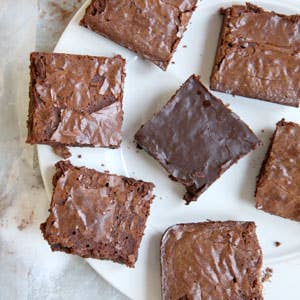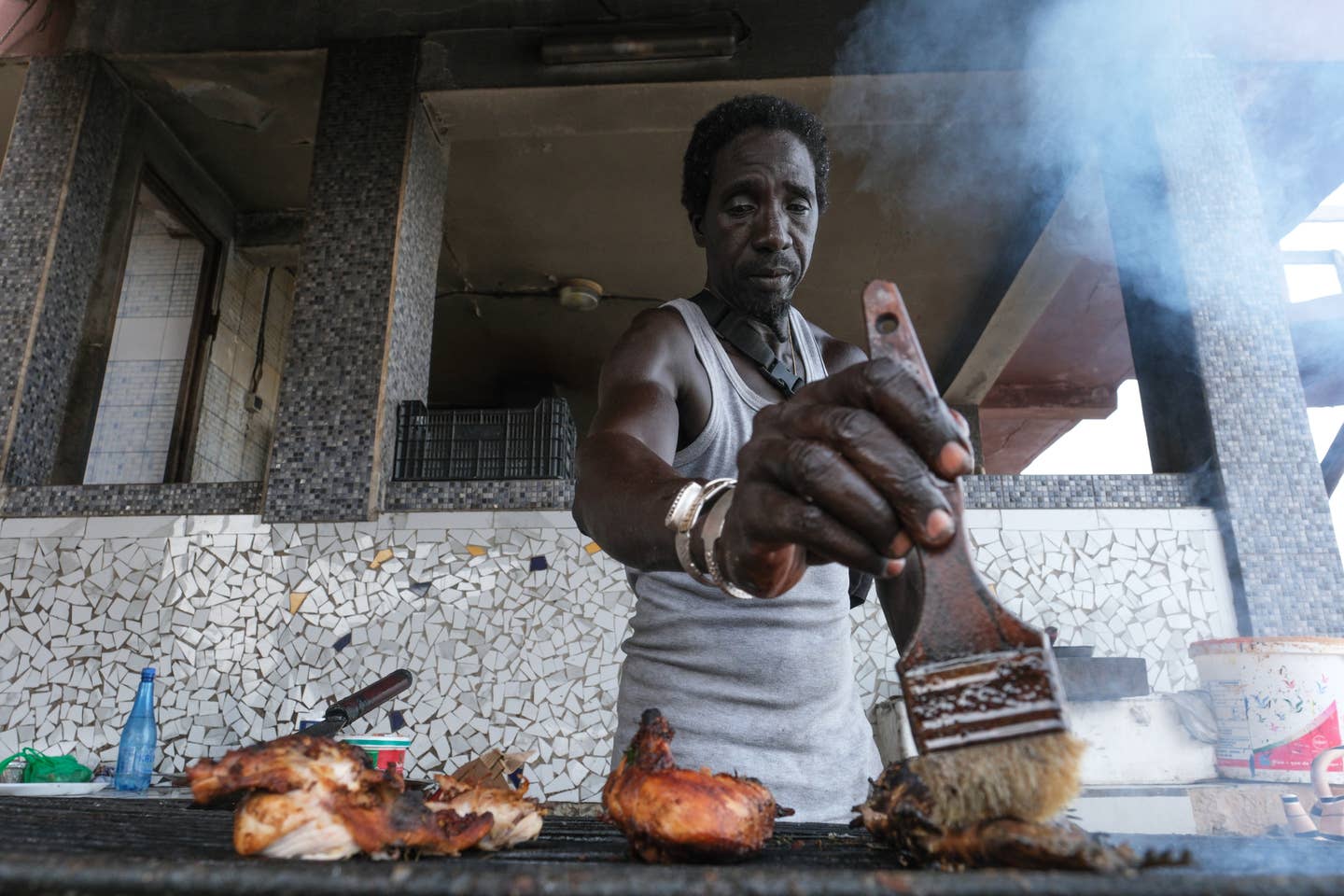
Funny how a dessert as humble as the brownie can generate such passionate debate. I've argued at length with friends about the various merits of fudgy brownies, cakey brownies, brownies with nuts, brownies with frosting, and on and on, to the point where I've questioned what constitutes a brownie in the first place. While it's generally agreed that brownies should be made with eggs, flour, sugar, butter or oil, and chocolate and cut into squares, attempts at further definition tend to fall short. Such ambiguities prompted me to ponder some existential questions about the origins and various incarnations of this beloved home-baked treat.
So, I started poring through culinary encyclopedias, old recipe books, and newspaper archives. Most of the brownie genesis stories I came across smacked of culinary fakelore: a fire in a Chicago hotel that caused a harried cook to combine a cookie batter with a cake batter; a New England housewife who forgot to add leavening to her chocolate sheet cake. A few sources attributed the invention of the brownie to one Mildred Brown "Brownie" Schrumpf (1903-2001), a home economics teacher in Maine who was also a columnist for the Bangor Daily News. That appeared to explain why many old versions of the dessert were called Bangor brownies—except that the earliest recipe for Bangor brownies I found appeared in the Boston Globe in 1905, when Schrumpf was still in diapers. Indeed, further research revealed that many culinary historians ascribe the word brownie not to a person but to elves, specifically the sweets-loving characters drawn by the Canadian illustrator Palmer Cox in the late 1800s. (I also found out that there's a Scottish dessert made with brown sugar called broonies that may also take its name from those fictional sprites.)
The earliest printed recipe for brownies dates to 1896, when the first edition of Fannie Farmer's seminal Boston Cooking-School Cookbook was published. The recipe in that book yielded a dessert that didn't look or taste at all like today's brownies; the bready treats were flavored with molasses instead of chocolate and were baked in individual molds. Then, in 1906, in keeping with a growing taste for chocolatey desserts, a new edition of the Boston Cooking-School Cookbook swapped chocolate for molasses in its chewy-brownie recipes. Other compilations soon followed its lead, most notably Lowney's Cook Book, published in 1907 by the Massachusetts chocolate company of the same name and written by a protegee of Farmer's, who used more chocolate in her recipe than other cooks had dared to previously. In 1908, another member of the Boston Cooking School circle, Maria Parloa, teamed up with the Boston-based chocolate company Baker's and created a brownie that was enriched with three eggs, vanilla, and baking powder, ushering into the American canon a more cakelike version of this easy-to-make, easy-to-customize dessert.
By the time the Betty Crocker company introduced its first brownie mix, in 1954, Joy of Cooking contained four very different brownie recipes. Though I gave up on store-bought mixes when I realized I could make better brownies just as effortlessly from scratch, I confess that some of my earliest lessons were gleaned from the back of a box: add an extra egg for cakier brownies; use less fat for fudgier ones. More recently, the New York-based baking instructor Nick Malgieri told me that the inclusion of less flour also makes for a fudgier, chewier brownie; his famous "supernatural" brownies are like a bar of fudge surrounded by a layer of chewy cake. I also learned that the type of flour used can make a difference (bread flour yields a denser texture than all-purpose) and that vegetable oil can make for moister, if less flavorful, brownies than butter.
When it comes to variations on the brownie theme, however, the fudgy-cakey continuum is just the beginning. Consider Malgieri's brownies, which are crowned with a glossy, crackly crust. Why, I wondered, do some brownies possess that shiny, paper-thin patina, while others have a matte finish and look like collapsed chocolate cakes? "It's from the sugar," the chocolatier Jacques Torres told me when I posed that question to him. Then I encountered other bakers who had explored the topic and come up with different answers: the food scientist Shirley Corriher claims that the formation of a crust has to do with how aggressively you beat the batter. And Alice Medrich, in her book Bittersweet (Artisan, 2003), writes that the crust is a product of the cook's heating the chocolate to a high temperature before the other ingredients are added.
Such disagreements notwithstanding, I've achieved a consistently good crust using a recipe credited to none other than the late actress Katharine Hepburn; I found it in Molly O'Neill's New York Cookbook (Workman, 1992) and instantly fell for these chewy, walnut-studded beauties. Aside from the crust, the one thing I've always liked about Hepburn's brownies is that they aren't intensely chocolatey; but that chocolatey flavor, I knew, was just what some brownie lovers look for. I began tinkering, hoping to learn how different kinds of chocolate affect taste and texture.
I started out with unsweetened chocolate, the historical preference, and came to the not so surprising conclusion that a high-quality chocolate (I tried 99 percent cacao Scharffen Berger) gives you a fuller flavor than a supermarket brand like Baker's. Then I moved on to bittersweet and semisweet chocolates, with their higher sugar content, and discovered that, although both varieties produced a glossier crust, the brownies made with semisweet chocolate were dramatically sweeter, even though the bittersweet type didn't contain that much less sugar. One reason for the disparity, I learned, is that bittersweet chocolate generally has more cacao, which tempers the sweetness with tannins. On a tip from Krystal Stone, a SAVEUR kitchen assistant who makes a mean espresso brownie, I also tried using cocoa powder, which produced darker, more strongly flavored bars.
I could have kept experimenting endlessly with different ingredients, but eventually the call of science gave way to the overwhelming desire to settle on a favorite brownie recipe or two, whip up a few batches, and then sit down with a tall glass of milk and eat.
Keep Reading
Continue to Next Story










